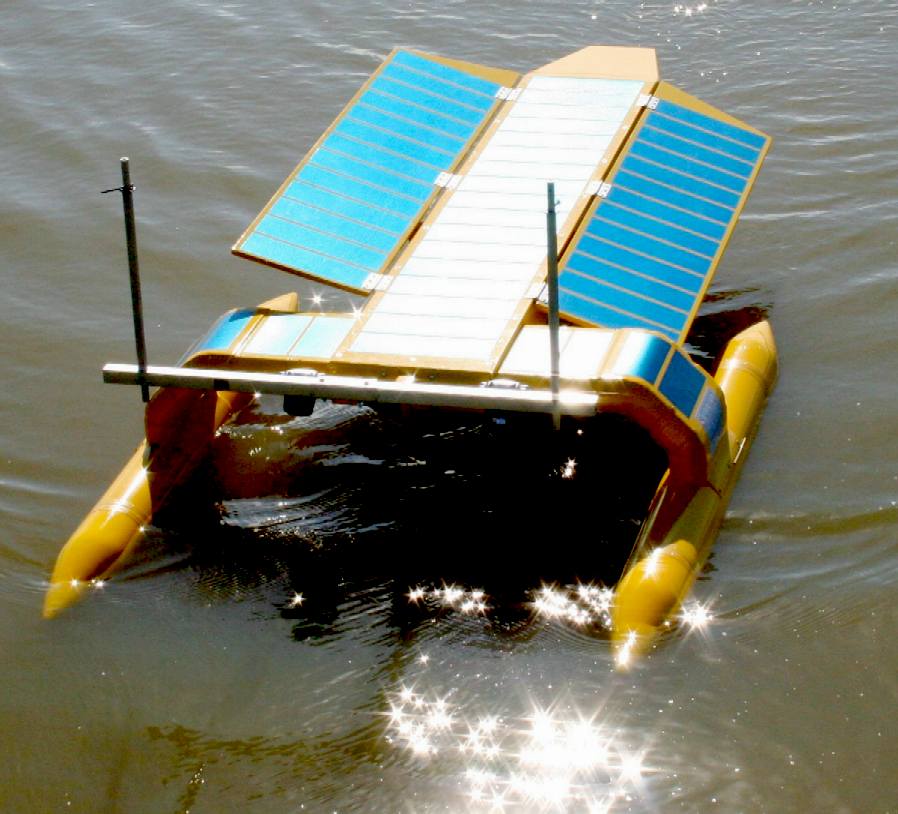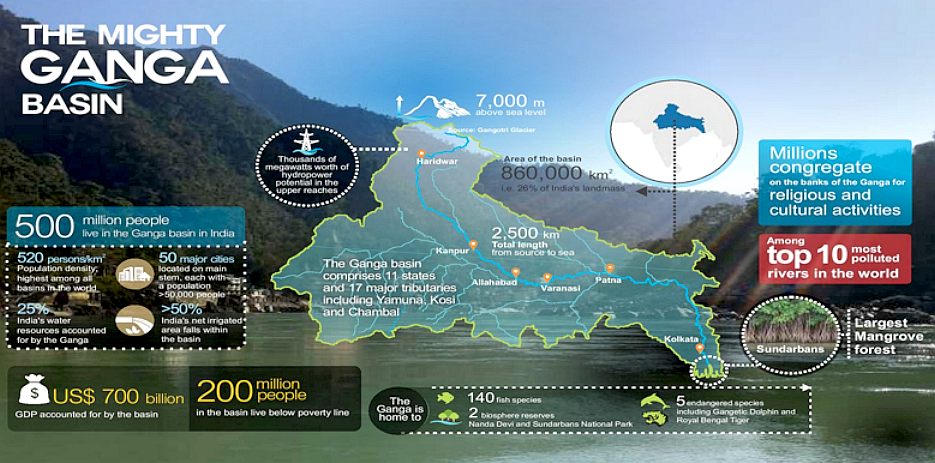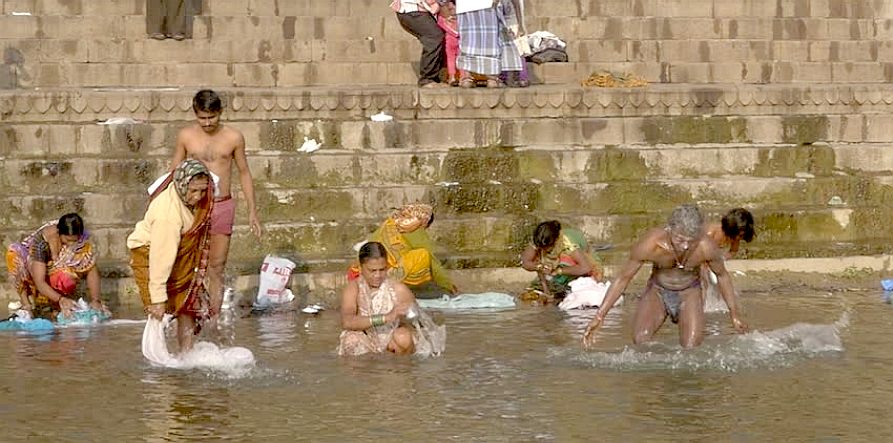|
SWACHH
BHARAT ABHIYAN

PROJECT
LAUNCH
- The Prime Minister launches his 5 year clean up India
campaign 2014 to 2019. If targets are not met year on year,
efforts should be stepped up to meet the challenge. The
quality of life of every citizen in the country will improve
as a result.
THE INDIAN EXPRESS - 5 OCTOBER 2015
A year of Swachh Bharat and it’s been no clean sweep. Here is why.
Rankings released earlier show several major cities such as
Mumbai, Delhi, Hyderabad, Patna, Lucknow, Jaipur among others fare poorly on the cleanliness scale.
A review of the year-long progress of the five-year Swachh Bharat Mission suggests it fail to match the high-decibel campaigning that has been the trademark of the flagship mission launched by Prime Minister Narendra Modi on October 2, 2014.
So as to put an end to open defecation and adopt better solid waste management practices, the one-year target for urban areas was to finish constructing 25 lakh individual toilets, 1 lakh community and public toilets, achieve 100 per cent collection and transportation of waste in 1,000 cities and cent per cent processing and disposal of waste in 100 cities. Only 20-25 percent of the target in terms of toilet construction has been achieved while on the garbage management front, the results are even more abysmal. Rankings released earlier show several major cities such as Mumbai, Delhi, Hyderabad, Patna, Lucknow, Jaipur among others fare poorly on the cleanliness scale.
The government has claimed that it has performed far better in rural India having constructed more than 80 lakh toilets in this period. However, the numbers are not exactly an indicator of the success of the Swachh Bharat Mission alone as it includes toilets constructed under several ongoing schemes such as the National Rural Employment Guarantee Act and the Indira Awaas Yojana. Moreover, the ministries in charge of Defence, Civil Aviation, Human Resource Development, Railways and Health have not reported on the extent of success of the cleanliness drive in the institutions under them.
While explaining the not-so-satisfactory figures a year into the mission, the government’s official version is that their initial focus has been on a campaign to to induce behavioral change in people. While such a change is imperative, it can only happen if the required physical infrastructure is in place. For instance, it is a tall order to wish away open defecation or eradication of manual scavenging unless people have access to toilets that are serviced by municipal systems.
Likewise, merely attitudinal changes in people will not end the problem of garbage accumulation in our cities unless the complete chain of garbage management is in place: from separation of dry and wet waste at source to processing in landfills.

RESPONSIBILITY
OF THE PEOPLE
- It is not going to happen overnight. Every person in the
country needs to wake up to the problem and pull together.
Agreed, that facilities are needed to make the change
possible, but as these facilities come on stream in the coming
years, the vision will become a reality. If untreated, a large
proportion of this waste will end up in India's rivers and
make its way into the Indian
Ocean.
HINDUSTAN
TIMES - OCTOBER 1 2015
On October 2, 2014, Prime Minister Narendra Modi launched the Swachh Bharat Abhiyan, a mission to clean India’s cities and villages.
The campaign, inaugurated to coincide with Gandhi Jayanti, aims to realise its vision of ‘Clean
India’ by October 2, 2019, the 150th birth anniversary of Mahatma Gandhi.
In the months after it was launched, the campaign gained momentum with many celebrities, politicians and academic institutions organising cleanliness drives across the country.
As a reminder of how seriously his government takes this mission, the prime minister brought up the issue during his Independence Day speech as well, talking about inadequate number of toilets .
A total of 31.83 lakh toilets were built between April 2014 and January 2015 under this campaign, which is 25.4% of the target for 2014-15. Over the next 5 years, the government plans to invest nearly Rs 2 lakh crore to construct 12 crore toilets across India.
The ambitious campaign has its fair share of challenges too. An impact assessment study conducted by the National Sample Survey Organisation (NSSO) revealed that toilets built in rural areas were lying unused, as the villagers were wary of using them.
Modi nominated nine celebrities, asking them to nominate nine more people to make the initiative go viral. These included Goa governor Mridula Sinha, cricket legend Sachin Tendulkar, yoga guru Baba Ramdev, Congress lawmaker and former union minister Shashi Tharoor, industrialist Anil Ambani, actors Kamal Hasan, Priyanka Chopra and Salman Khan and the team of popular TV serial Tarak Mehta Ka Oolta Chashma.

LEADING
BY EXAMPLE
- If cleanliness is next to godliness, then thinking clean
is the way to go. Thinking clean means understanding the
people and working with them. Cities cannot be clean places to
live without modern conveniences. The rural situation is
somewhat different as any country person will tell you.
Mission Objectives
The national campaign, which will run till October 2, 2019, aims to :
1. Eliminate open defecation by constructing toilets for households, communities
2. Eradicate manual scavenging
3. Introduce modern and scientific municipal solid waste management practices
4. Enable private sector participation in the sanitation sector
5. Change people’s attitudes to sanitation and create awareness.
Courting Controversy
The campaign waded into controversy with allegations that many politicians were turning it into a mere photo-op. Members of the BJP’s Delhi unit, including president Satish Upadhyay, came under fire when it was reported that garbage was littered on a clean pavement so they could clean it.
Delhi chief minister Arvind Kejriwal agreed to participate in the campaign on urban development minister M Venkaiah Naidu’s invitation but said that such “symbolic gestures” cannot make India clean.
The campaign was also criticised on the grounds that Modi was using it as a platform to gain political mileage by rebranding the existing Nirmal Bharat Abhiyan mission.

RIVERVAX™
- Is a potential solution for surface (and subsurface) river
pollution that is cost effective.
The value of such a vessel might not be limited to the ability
to vacuum the Ganges
clean, but also as a visible reminder on a daily basis, that
cleanup is in progress and that progress is being made. This workboat is solar and wind
powered, another step forward for a nation that is doing their
level best to combat climate
change.

DIESEL
POWER - Medium sized machines such as that shown above
from China are fine for surface skimming to pick up solids in
the short term, but they use a lot of fossil fuels in the
process, and so may not be economical to operate in the long
term. The point here is that the technology is partly in place
to produce more advanced river cleaners - with a lot of the hydraulic
parts being produced in Asia at very competitive prices.
WIKIPEDIA
Swachh Bharat Abhiyan (English: Clean India Mission and abbreviated as SBA or SBM for "Swachh Bharat Mission") is a national campaign by the Government of India, covering 4,041 statutory cities and towns, to clean the streets, roads and infrastructure of the country.
The campaign was officially launched on 2nd October 2014 at Rajghat, New Delhi, where Prime Minister Narendra Modi himself cleaned the road. Modi said that the best memorial to Mahatma Gandhi would be to achieve a "Clean India" by 2019, his 150th birth anniversary. It is India's biggest ever cleanliness drive and 3 million government employees and school and college students of India participated in this event. The mission was started by Prime Minister Modi, who nominated nine famous personalities for the campaign, and they took up the challenge and nominated nine more people and so on. It has been carried forward since then with people from all walks of life joining it.

PROTEST
- We were not put on this earth to spoil it, we were put
here to understand nature and work in harmony for a truly
sustainable society. Let us not be greedy, let us look to
ourselves to undo the harm we are doing. Everyone on the
planet is responsible. Do what is within your power to make it
happen.
BACKGROUND
With effect from 1 April 1999, the Government of India restructured the Comprehensive Rural Sanitation Programme and launched the Total Sanitation Campaign (TSC) which was later (on 1 April 2012) renamed Nirmal Bharat Abhiyan
(NBA).
Prime Minister Narendra Modi spoke of the need for toilets in his 2014 Independence Day speech
stating:
"Has it ever pained us that our mothers and sisters have to defecate in open? Poor womenfolk of the village wait for the night; until darkness descends, they
can't go out to defecate. What bodily torture they must be feeling, how many diseases that act might engender. Can't we just make arrangements for toilets for the dignity of our mothers and sisters?"
— Narendra Modi
Modi also spoke of the need for toilets in schools during the campaign for 2014 Jammu and Kashmir state elections
stating:
"When the girl student reaches the age where she realises this lack of female toilets in the school she leaves her education midway. As they leave their education midway they remain uneducated. Our daughters must also get equal chance to quality education. After 60 years of independence there should have been separate toilets for girl students in every school. But for the past 60 years they could not provide separate toilets to girls and as result the female students had to leave their education midway."
— Narendra Modi

OBJECTIVES
This campaign aims to accomplish the vision of a 'Clean India' by 2 October 2019, the 150th birthday of Mahatma Gandhi. Specific objectives are:
* Eliminate open defecation by constructing toilets for households, communities
* Eradicate manual scavenging
* Introduce modern and scientific municipal solid waste management practices
* Enable private sector participation in the sanitation sector
* Change people’s attitudes to sanitation and create awareness
The program plans to construct 12 crore toilets in rural India by October 2019, at a projected cost of  1.96 lakh crore (US$29 billion). 1.96 lakh crore (US$29 billion).

BSE
GROUP
- The Bombay Stock Exchange makes a sizeable contribution
to the clean up.
FINANCE
Swachh Bharat Mission envisages an investment of
 620.09 billion (US$9.1 billion), of which 620.09 billion (US$9.1 billion), of which
 146.23 billion (US$2.2 billion) will be provided by the Centre. The rest is expected to be raised by states, urban local bodies, and from private players. For FY 2015-16, the Government has allocated 146.23 billion (US$2.2 billion) will be provided by the Centre. The rest is expected to be raised by states, urban local bodies, and from private players. For FY 2015-16, the Government has allocated
 36.25 billion (US$530 million) for Swachh Bharat Mission, an increase of 27% over the previous financial year. 36.25 billion (US$530 million) for Swachh Bharat Mission, an increase of 27% over the previous financial year.
For funding the mission, a Swachh Bharat Cess has been imposed on Service Tax at the rate of 0.5% since 15 November 2015. The programme has also received funding and technical support from the World Bank, corporations as part of corporate social responsibility initiatives, and by state governments under the Sarva Shiksha Abhiyan and Rashtriya Madhyamik Shiksha Abhiyan schemes.
CLEANLINESS INDEX
The Ministry of Urban Development (MoUD) has released cleanliness rankings for all 476 Class 1 cities with a population of over one lakh. The cities were graded based on their performance on two major indicators in the Mission: efforts to end open defecation, and solid waste management practices, which were assigned 20 and 22 marks respectively. The country was divided into five zones (South, North, West, East and Central) and market research agencies were appointed to collate data from urban local bodies on individual, public and community toilets and the door-to-door collection, transportation and disposal of waste generated in each city. This was followed by field visits and interviews in five sample railway stations, bus stations, slums, markets, commercial areas and planned and unplanned localities, before marks were assigned for various categories.
13
CLEANEST
Chandigarh, Union Territory
Mysore, Karnataka
Surat, Gujarat
Navi Mumbai, Maharashtra
Tiruchirapalli, Tamil Nadu
Kochi, Kerala
Hassan, Karnataka
Mandya, Karnataka
Bengaluru, Karnataka
Tiruvanantapuram, Kerala
Halisahar, West Bengal
Gangtok, Sikkim
Jaipur, Rajasthan
CAMPAIGN - Invitation Chain
On 2 October 2014, PM Modi invited 9 public figures namely Sachin Tendulkar, Priyanka Chopra, Anil Ambani, Salman Khan, Sasi Tharoor, Kapil Sharma, Mridula Sinha, Ramdev and the team of the television series Taarak Mehta Ka Ooltah Chashmah to join the Swachh Bharat campaign and requested each of them to draw nine more into the initiative to take it viral.
On 8 November 2014, Modi carried the message to Uttar Pradesh and nominated another set of nine people for the state including CM Akhilesh Yadav, Swami Rambhadracharya, Manoj Tiwari, Mohammad Kaif, Deviprasad Dwivedi, Raju Srivastava, Suresh Raina, Kailash Kher and Manu Sharma.
PM Modi participates in Sramdaan as part of Swachhta Abhiyan at Assi Ghat, Varanasi
On 9 November 2014, Prime Minister Modi cleaned Assi Ghat and nominated nine more people including Kapil Sharma (comedian), Sourav Ganguly, Kiran Bedi, Padmanabha Acharya, Sonal Mansingh, Eenadu group owner Ramoji Rao and his team, India Today group and its head Aroon Purie, the Institute of Chartered Accountants of India and Dabbawalas of Mumbai.
Urban Development Minister M. Venkaiah Naidu picked up a broom to help clean the cyclone-hit port city of Visakhapatnam in the southern state of Andhra Pradesh, as part of the cleanliness campaign and invited Pawan Kalyan, S. P. Balasubrahmanyam, Amala (actress), K. Kavitha, Gunupati Venkata Krishna Reddy, Suddala Ashok Teja, Pullela Gopichand, Humpy Koneru, Galla Jayadev, Nitin, V. V. S. Laxman, J. Rameshwar Rao, Shivlal Yadav, B. V. R. Mohan Reddy and Lakshmi Manchu contributing to the chain.
More than 3 million government employees and school
and college
students are to participate in the drive.
PERFORMANCE
Between April 2014 and January 2015, 31.83 lakh toilets were built. Karnataka led all States in construction of toilets under the programme, while Punjab built the least. As of August 2015, 80 lakh toilets have been constructed under the program.
As of May 2015, 14 companies including Tata Consultancy Services, Mahindra Group and Rotary International have pledged to construct 3,195 new toilets. As of the same month, 71 Public Sector Undertakings in India supported the construction of 86,781 new toilets.
According to the study released on the occasion of World Toilet Day on 19 November 2015, the world's second most populous nation has 60.4% of its people without access to safe and private toilets.

SIMILAR INITIATIVES
Swachh Bharat, Swasth Bharat is an Indian University Grants Commission (UGC) initiative to involve various stakeholders in higher education across the country to create awareness among the general public of the necessity for cleanliness and healthy living. UGC has requested educational institutions to engage the National Cadet Corps and the volunteers of the National Service Scheme to carry out exercises that may involve planting trees, effective waste management, plastic-free environment, rainwater harvesting, and substance abuse-free campuses. The idea is to launch a clean India movement by inculcating the idea of "4 Cs" (clean mind, clean body, clean environment, and clean society) in students. It will be implemented in universities and colleges.
Swachh Noida campaign was inaugurated by Mahesh Sharma, Minister of State (Independent Charge) for Culture, Tourism and Civil Aviation, Government of India on the occasion of
United
Nations' International Day of Persons with Disabilities. It aims to spread awareness about cleanliness among Noida residents. The campaign draws inspiration from Swachh Bharat
Abhiyan.

VARNASI
- Wonderful scenes like this will be even more pleasing in
the knowledge that the mighty Ganga is healthier. Cleaner
water safeguards the health of the nation. The move begins
with treatment of raw sewage and that begins with toilets,
sewers and treatment plants.
LINKS
& REFERENCE
Wikipedia
Swachh_Bharat_Abhiyan
Indian
Express one-year-of-swachh-bharat-and-its-been-no-clean-sweep
Hindustan
Times India
swachh-bharat-abhiyan-is-modi-s-scheme-a-success-one-year-later
Narendra
Modi pm-launches-swachh-bharat-abhiyaan
Swachh
Bharat
Swachh
Bharat Urban
IB
Times
Magh Mela 2015 thousands pilgrims bathe Holy waters Hindu
festival photos
http://www.ibtimes.com/pulse/magh-mela-2015-thousands-pilgrims-bathe-holy-waters-hindu-festival-photos-1788540
https://swachhbharat.mygov.in/
https://swachhbharaturban.gov.in/
http://www.narendramodi.in/pm-launches-swachh-bharat-abhiyaan-6697
https://en.wikipedia.org/wiki/Swachh_Bharat_Abhiyan
http://indianexpress.com/article/explained/one-year-of-swachh-bharat-and-its-been-no-clean-sweep/
http://www.hindustantimes.com/india/swachh-bharat-abhiyan-is-modi-s-scheme-a-success-one-year-later/story-XDjpG9TjuYtkQnFdYKgQyM.html
|